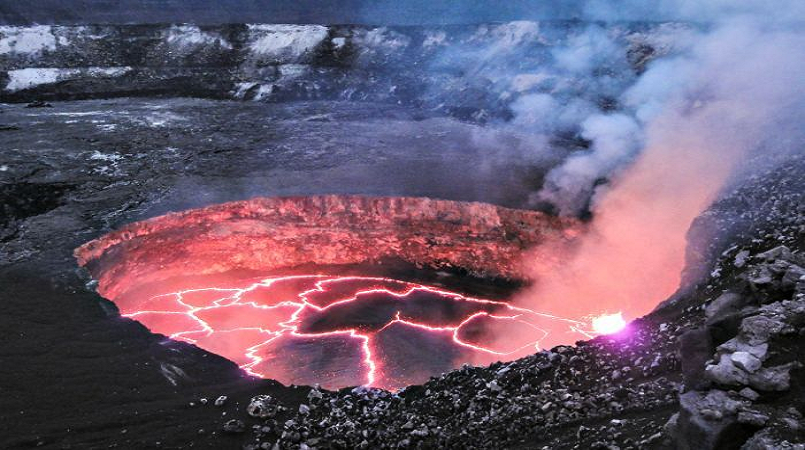
A team led by Australian National University researchers has solved the mystery behind the world's largest and most active volcanoes in Hawaii.
The study used computer simulations to determine that the twin tracks that caused the volcanoes are due to a shift in the Pacific Plate's motion three million years ago.
Lead researcher Tim Jones said the discovery would help scientists better reconstruct Earth's history.
"We're now recognising that we see these all over the globe," he said.
"Mantle plumes have played a role in mass extinctions, the creation of diamonds and the breaking up of continents."
"What's important about our research is that we notice that a lot of these occurred on the Pacific Plate and they emerged all at the same time.
"Heat from the Earth's core causes hot columns of rock, called mantle plumes, to rise under tectonic plates and produce volcanic activity on the surface.
International collaboration
The international team from the Britain, the United States, Demark and Australia found that twin volcanic tracks emerged because the mantle plume was out of alignment with the direction of the plate's motion.
Scientists have known of the existence of the twin volcanic tracks since 1849 but their cause had remained a mystery until now.
"It helps to explain the origin of Hawaii, Earth's biggest volcanic hotspot and one of the most popular tourist destinations in the world," Mr Jones said.
Twin volcanic tracks exist in other parts of the Pacific, including Samoa.
"It means we can go back in time to find out when they occurred and use that information to infer that there has been changes in the motion of the plate," Mr Jones said.
"That means we can reconstruct the tectonic history of Earth and figure out how the past got us to the present and predict what our planet will look like in the future."
